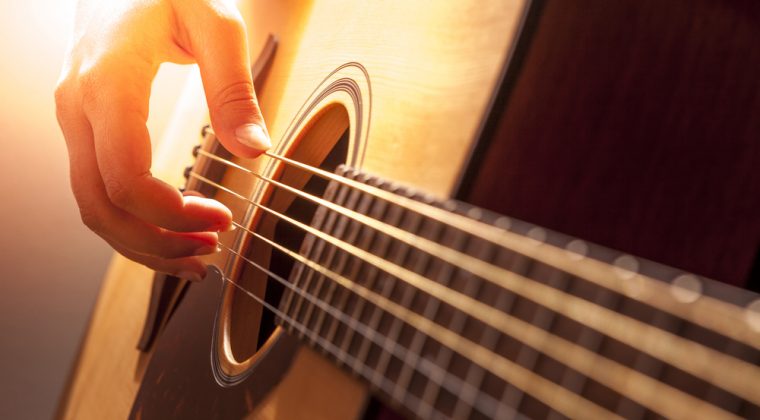Acoustic-electric guitars differ from purely acoustic guitars in that they are equipped with electrical components that aid in amplifying the sound coming from them. These components are strategically placed in or on the body of a guitar to accurately reproduce the acoustic sound.
Acoustic guitars with electronics have a pickup that convert the strings’ sound vibrations into electrical signal. This is then passed on to an output source. There are different types of pickups and they respond differently to the vibrations not only of the strings but also the top or soundboard of the acoustic guitar.
If you’re considering buying an acoustic-electric guitar or are thinking of fitting your acoustic with a pickup, it’s important for you to know the main types of pickups for acoustic guitar and how their placement influences the amplified sound.
Transducer Pickups
Transducer pickups adhere to the guitar’s soundboard. Because of this placement, these pickups hear or pick up how the top of the guitar reacts to string vibration. The sound that transducers produce reflects how well the soundboard vibrates.
If your guitar is fitted with a transducer pickup, it would be ideal if your amp or preamp has a feedback-reducing feature because transducers tend to be more sensitive to feedback than other pickup types.
Piezo Pickups
Piezo pickups are placed under the saddle, right where the strings pass over so the strings are what these pickups hear. These are also known as undersaddle pickups. They tend to have a thin sound because they only replicate the sound made by the strings and not the soundboard of the guitar.
Undersaddle pickups are an advantage for guitarists who play with a band because the sonic output can easily cut through the mix. However, piezo pickups can sound synthetic because they can’t quite capture the rich, warm sound of a natural acoustic.
These pickups also have a greater resistance to feedback, which is why musicians who require lots of volume (such as stage performers and those who play in a band) choose guitars with piezo pickups.
Piezo pickups are passive and give a low output. To maximize their function, it’s necessary to pair it up with a preamp similar to these Phono Stages you can find online, or others you can find elsewhere.
Soundhole Pickups
You can find soundhole pickups on the upper bout of the guitar – just kidding. It’s pretty easy to know where these pickups are placed based on the name. Also referred to as magnetic pickups, these are usually mounted directly in the soundhole and can be easily installed and removed.
Magnetic pickups pickups use a technology that likens it to a microphone but without the feedback. These pickups can capture the sound of each string clearly and evenly across the guitar. These pickups produce a more authentic acoustic tone than piezos, making them Goldilocks’ choice between transducers and piezo pickups in situations where a high volume is required. The sound is a cross between an acoustic and an electric guitar.
Contact Pickups
These pickups have one or more sensors that can be placed on the top of the guitar and under the bridge, allowing them to pick up the vibrations from both the soundboard and the strings. This makes them the most able to reproduce a natural and authentic acoustic guitar sound.
The only catch is that they tend to be prone to feedback issues at higher volumes so you would need an amp with a feedback filter when using contact pickups. Contact pickups are best for musicians who play in lower-volume gigs. Some acoustic-electric guitars employ one or more of these pickups to bring out the best in each and reduce unwanted feedback. It’s worthwhile to check out blended and multi-source systems as well. You can try out different guitars that vary in their electronic specs so you can have an idea of which setup would give you the sound you’re looking for. Have fun!

